Welcome to Kamakura, a coastal city steeped in history and with scenic beauty.
This blog post explores the 10 best beautiful places in Kamakura, each offering a unique blend of cultural heritage and natural splendor.
Kamakura invites visitors to return in time and discover its decadent array of temples, shrines, and breathtaking landscapes, from the iconic Great Buddha to the serene walking trails that crisscross the city.
Join us as we uncover the treasures that make Kamakura a must-visit destination for anyone seeking a fusion of historical significance and picturesque settings.
- Recommended BEST Tours in Kamakura
- Recommended Kamakura Hotels
- Cheap Flights, Airline Tickets & Plane Tickets (TRIP.COM)
Number 10: Sasuke Inari Shrine.
At number 10, Sasuke Inari Shrine stands as a hidden gem nestled in the wooded hills of Kamakura, offering a serene escape steeped in mystique and spiritual allure. This shrine is renowned for its captivating atmosphere and the dramatic visual impact of thousands of vermilion torii gates, which create a stunning contrast against the lush green backdrop of the surrounding forest.

The journey to Sasuke Inari Shrine begins with a path that winds through a dense canopy of trees, with each step further into the woods amplifying the sense of entering a different world. Visitors traverse the path are greeted by the iconic red torii gates, which mark the entrance and guide them along a scenic route. This winding trail under the Tori gates is not just a path; it is a spiritual passage that invites reflection and offers a chance to disconnect from the outside world.
The shrine is dedicated to Inari, the Shinto god of rice, fertility, and industry. It is famously associated with fox spirits, believed to be the messengers of the deity. Statues of these foxes are found throughout the shrine grounds. They often hold keys in their mouths, symbolizing the unlocking of granaries and, by extension, the granting of prosperity and success.
Sasuke Inari Shrine’s atmosphere is enriched by its history and the legends surrounding its origins, which add layers of depth to the visitor experience. According to local lore, the shrine was founded after a peasant was led here by a mysterious fox, and it has since been a place of worship and a site for seeking blessings for success and prosperity.
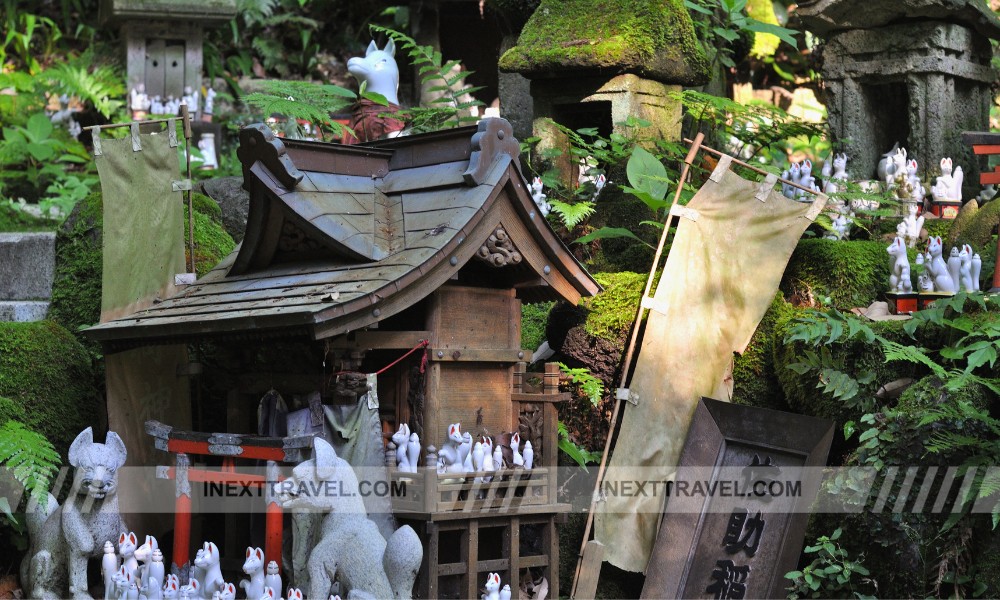
Beyond its religious significance, the shrine offers a visually enchanting experience, particularly during the autumn when the maple trees turn vibrant shades of red and gold, creating a fiery tunnel of torii gates that is both photogenic and mesmerizing. This natural and architectural beauty makes Sasuke Inari Shrine a spiritual center and a haven for photographers and nature lovers.
In summary, Sasuke Inari Shrine is more than just a place of worship; it is a destination where nature, spirituality, and art converge into a tranquil retreat from the everyday world. It is a testament to Kamakura’s enduring beauty and cultural depth, making it a must-visit for those seeking peace, natural beauty, and a touch of the mystical in their travels.
Number 9: Zeniarai Benzaiten Ugafuku Shrine.
At number 9, Zeniarai Benzaiten Ugafuku Shrine presents one of Kamakura’s most enchanting and unique attractions. Nestled in a secluded valley, surrounded by the natural beauty of lush greenery and rugged rock formations, this shrine is renowned for a singular and intriguing ritual: visitors wash their money in its sacred spring, believed to multiply their wealth and bring good fortune.

Zeniarai Benzaiten Ugafuku Shrine was founded in the 12th century by Minamoto no Yoritomo, the first shogun of the Kamakura Shogunate, following a divine revelation in a dream. The shrine is dedicated to Benzaiten, the goddess of knowledge, art, and beauty, associated with water and considered purifying in Shinto belief. This association makes the shrine’s spring a natural focal point for visitors seeking blessings.
The ritual of washing money (zeniarai) involves using the shrine’s sacred water to cleanse coins and bills, which are then kept in the wallet to attract further abundance. This practice offers a spiritual dimension and connects visitors to Kamakura’s historical and cultural fabric, blending worship with personal hopes and dreams.
The approach to the shrine is as mystical as the ritual itself. Tucked away in a small cave, visitors pass through a network of tunnels carved into the rock, emerging into a serene courtyard that feels worlds away from the hustle and bustle of modern life. The cave setting amplifies the shrine’s mystical atmosphere, making the experience of visiting both a visual and spiritual journey.
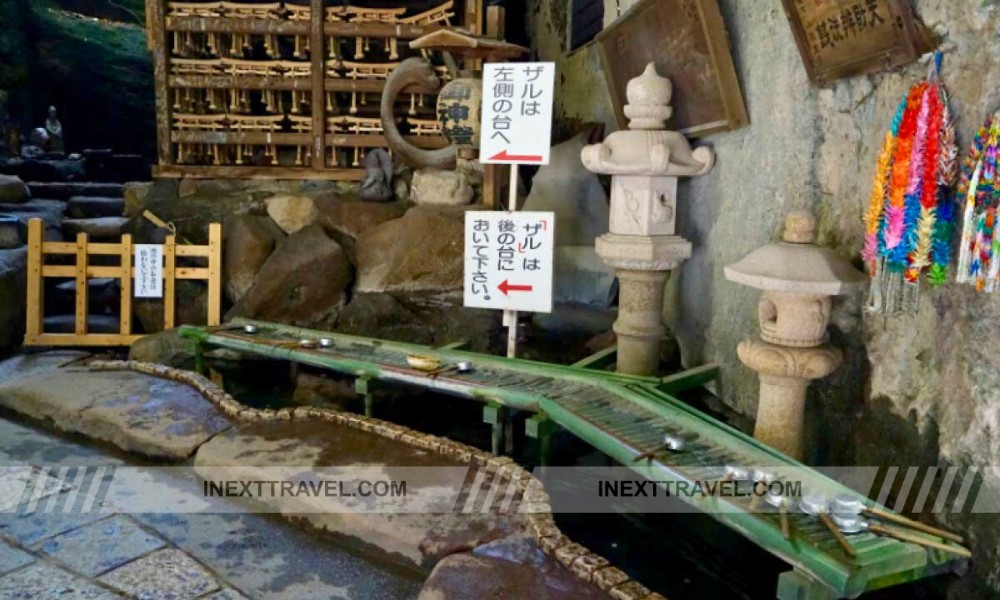
Apart from its unique ritual, Zeniarai Benzaiten Ugafuku Shrine is a place of stunning natural beauty. With its verdant foliage and tranquil ambiance, the surrounding area invites visitors to linger and reflect. The natural beauty, spiritual practice, and cultural history make this shrine a popular tourist attraction and a cherished local landmark.
Zeniarai Benzaiten Ugafuku Shrine offers more than curiosity; it is a profound blend of spirituality, tradition, and natural beauty. This unique shrine remains one of Kamakura’s most beautiful places, inviting all who visit to partake in a ritual that promises prosperity and peace, set against the backdrop of an extraordinary cave sanctuary.
Number 8: Hasedera Temple.
At number 8, Hasedera Temple stands as a splendid symbol of spiritual serenity and natural beauty in Kamakura. This ancient temple, nestled along a hillside with sweeping ocean views, is renowned for housing one of Japan’s most giant wooden statues of Kannon, the Goddess of Mercy. This impressive and intricately carved statue, standing nearly 9.18 meters tall, draws visitors for its artistic merit and embodiment of compassion and benevolence in Buddhist culture.
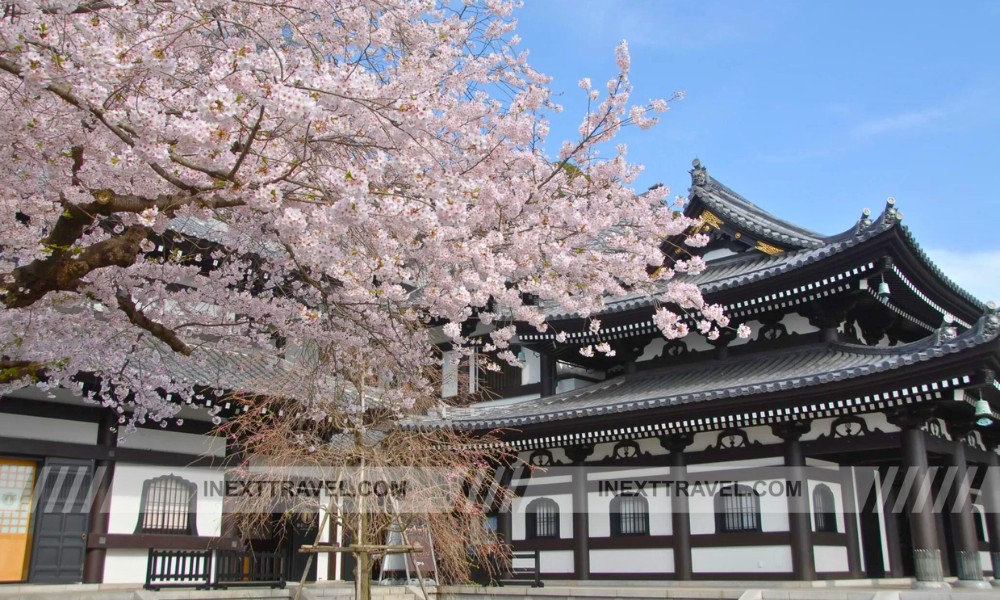
Hasedera Temple’s appeal extends beyond its spiritual significance. The temple grounds are a marvel of landscape architecture, featuring meticulously maintained gardens that blossom with seasonal flora throughout the year. In spring, cherry blossoms and vibrant azaleas attract crowds who come to enjoy the lush, colorful displays set against the backdrop of the sea. Summer brings hydrangeas, with paths winding through dense clusters of flowers in varying shades of blue, purple, and pink. In autumn, the foliage turns fiery hues of orange and red, providing a picturesque autumnal setting. In winter, the calm and clarity of the season lend a peaceful solitude to the gardens.
The gardens also feature a series of ponds and streams, adding a soothing auditory element to the visual beauty of the temple grounds. These water features, combined with the strategic planting of trees and flowers, create a harmonious environment that enhances the contemplative atmosphere of the temple.
Moreover, Hasedera Temple offers visitors stunning ocean views from its elevated terraces. These vantage points provide a panoramic view of the coastline and the deep blue waters of Sagami Bay, making it a perfect spot for reflection or to enjoy the area’s natural beauty.
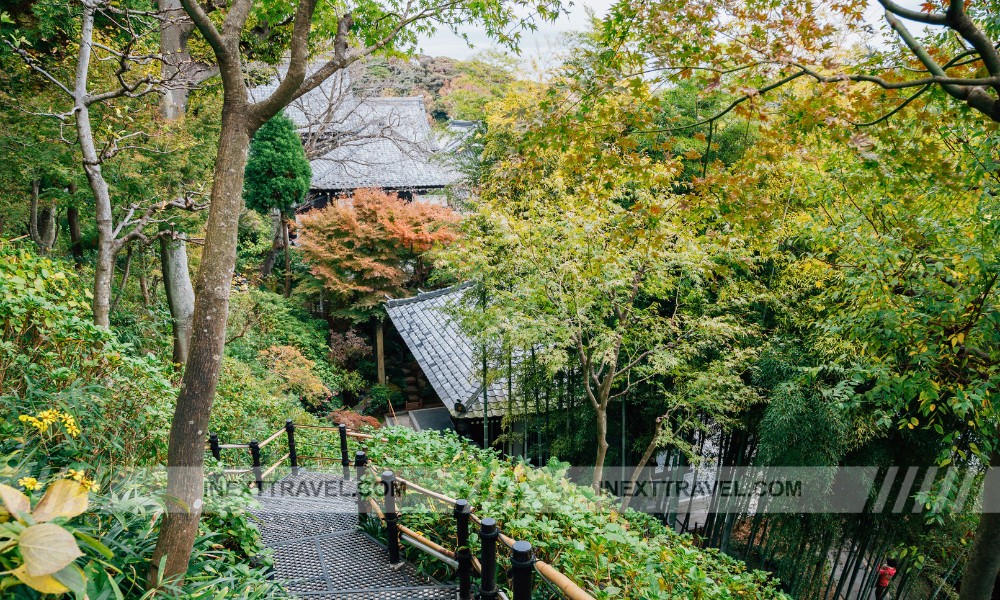
The temple complex also includes a museum that showcases religious artifacts and artworks related to the temple’s history and the Kannon statue. Additionally, there are smaller shrines within the complex, each with its significance and charm, contributing to the overall spiritual experience of the visit.
In summary, Hasedera Temple is more than just a place of worship; it is a sanctuary of peace and natural beauty. Its spiritual significance, artistic heritage, and stunning landscaped gardens make it one of the best beautiful places in Kamakura, offering a multifaceted experience that appeals to the senses and the soul. Whether seeking a moment of quiet meditation or simply enjoying the beauty of nature and art, Hasedera Temple provides a perfect retreat.
Number 7: Zaimokuza Beach.
At number 7, Zaimokuza Beach offers a delightful escape into the laid-back beach culture of Kamakura, providing visitors with a perfect blend of relaxation and recreation. This sandy stretch, located near the historic town, is a popular destination for both locals and tourists looking to enjoy the serene atmosphere and scenic beauty of Sagami Bay.

Zaimokuza Beach is characterized by its broad, sandy shores that stretch invitingly along the coast, making it an ideal spot for various beach activities. The beach becomes a vibrant summer hub for swimming, sunbathing, and surfing. The gentle waves and vast expanse of water make it suitable for swimmers of all levels, while the consistent surf conditions attract surfers looking to catch the perfect wave.
The beach’s relaxed atmosphere is complemented by its scenic surroundings. The views of Sagami Bay are breathtaking, with the vast, blue waters stretching out to the horizon, framed by the distant outline of lush hills and the occasional appearance of traditional fishing boats. This picturesque setting is perfect for those who wish to unwind and soak in the natural beauty while lounging on the sand or strolling along the water’s edge.
Zaimokuza Beach also serves as a cultural spot during various times of the year. Festivals and events are held on its sands, celebrating local traditions and community spirit. These include lively fireworks displays, which light up the night sky in brilliant colors, and traditional festivals that bring together music, dance, and food, offering a taste of local life.
For those seeking refreshment and entertainment off the sand, the beach has various restaurants, cafes, and bars that offer everything from fresh seafood to cool beverages and snacks. These establishments provide delicious refreshments and offer seats with stunning views of the bay, enhancing the overall beach experience.
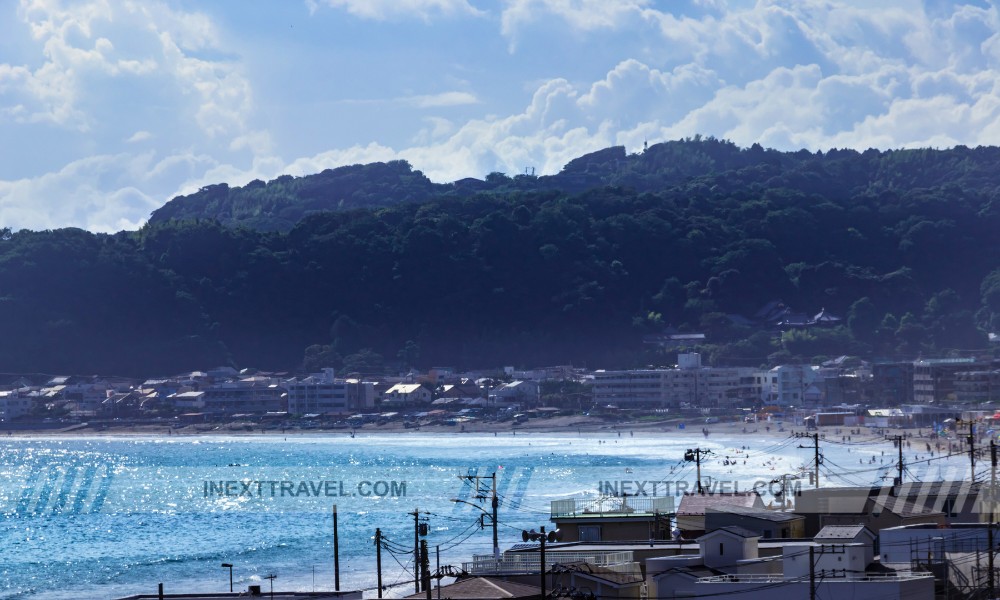
In summary, Zaimokuza Beach is not just a place to enjoy the sun and sea; it is a vibrant community spot that offers a perfect mix of natural beauty, recreational fun, and cultural activities. Whether surfing the waves, participating in a beach festival, or enjoying a sunset over Sagami Bay, Zaimokuza Beach stands out as one of the most beautiful places in Kamakura for a delightful day by the sea.
Number 6: Hokokuji Temple.
At number 6, Hokokuji Temple, fondly known as the ‘Bamboo Temple,’ stands as an iconic symbol of serenity and natural beauty in Kamakura. Renowned for its stunning bamboo grove, this Zen Buddhist temple offers a tranquil retreat from the bustling city life, making it a must-visit for anyone seeking peace and reflection.
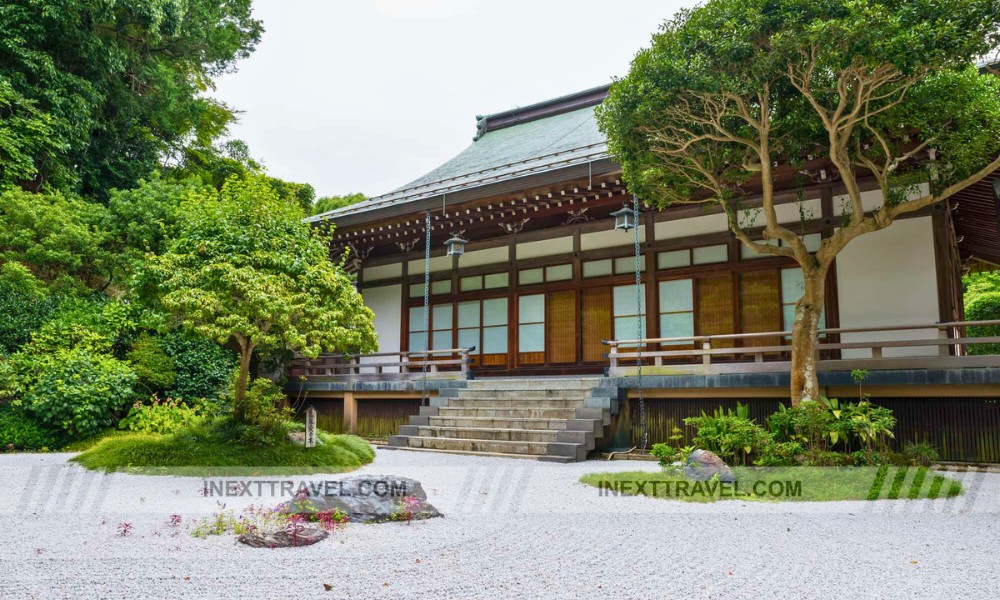
The temple grounds are home to a thick forest of over 2,000 moso bamboo stalks, creating an almost otherworldly atmosphere. As visitors wander through the pathways carved out of the dense bamboo, the sun filters through the tall, swaying stalks, casting soft, dappled light that creates a calm and meditative environment. The sound of the bamboo leaves rustling in the wind adds an auditory layer to the tranquility, enhancing the sense of being in a secluded, sacred space.
Central to the experience at Hokokuji Temple is the charming tea house nestled within the bamboo grove. Here, visitors can partake in a traditional Japanese tea ceremony, sipping matcha—a finely ground, vibrant green tea—while viewing the surrounding bamboo. This practice allows one to enjoy the unique flavors of ceremonial tea and encourages mindfulness and presence at the moment, hallmarks of Zen practices.
While modest in size, the temple is rich in history and spiritual significance. Founded during the Muromachi period in the 14th century, Hokokuji Temple was initially established by the ruling Ashikaga clan. The temple features a beautiful rock garden and small, intricately carved statues contributing to its Zen aesthetic, inviting introspection and contemplation.

Hokokuji Temple is not just about the visual and spiritual experience; it also engages visitors in cultural education. The temple hosts regular talks and workshops on Zen Buddhism and the art of the Japanese tea ceremony, providing deeper insights into its traditions’ philosophical and cultural underpinnings.
In summary, Hokokuji Temple, or the ‘Bamboo Temple,’ offers more than just a visual delight with its mesmerizing bamboo grove. It is a place where history, culture, and nature converge to provide a truly enriching experience. Whether you seek spiritual solace, cultural enrichment, or a quiet place to unwind, Hokokuji Temple stands out as one of the best beautiful places in Kamakura, offering a unique and memorable escape into Zen tranquility.
Number 5: Tsurugaoka Hachimangu Shrine.
At number 5, Tsurugaoka Hachimangu Shrine holds a place of prestige and reverence as Kamakura’s most significant Shinto shrine. Positioned centrally in the city, this grand shrine is a focal point of spiritual significance and the heart of Kamakura’s cultural and religious activities. Its striking architecture and beautifully maintained grounds make it a beacon of tradition and a center of communal life.
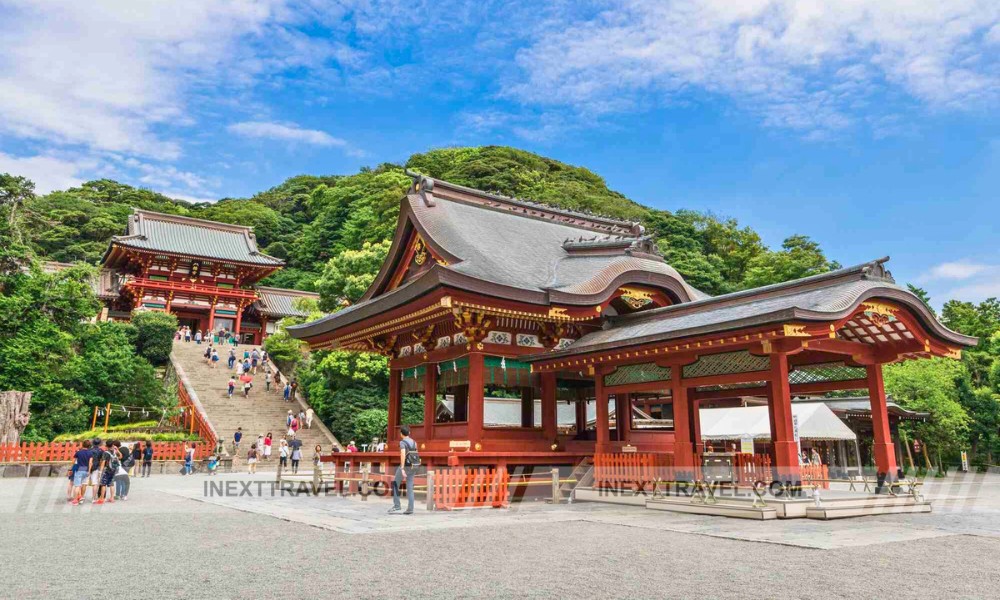
Established in the 11th century and moved to its current site in the 12th century by Minamoto no Yoritomo, the founder of the Kamakura Shogunate, Tsurugaoka Hachimangu has been a pivotal site throughout Kamakura’s history. The shrine was designed to be viewed from the long approach called Wakamiya Oji, culminating in a dramatic stairway that leads up to the main hall, creating a regal and imposing visual approach. This layout reflects its historical importance as a place of worship and a symbol of the shogunate’s power.
The expansive shrine complex features several buildings, ponds, and museums. The main hall, or Honden, is an architectural marvel adorned with intricate carvings and gold leaves that shine brilliantly against the natural backdrop. Surrounding it are lush gardens and secondary shrines, each contributing to the serene atmosphere that envelops the area.
Tsurugaoka Hachimangu is renowned for its vibrant festival calendar, hosting events that draw visitors across Japan and worldwide. The annual Shogatsu (New Year’s) festival is the most famous, where thousands gather to pray for good fortune and success in the coming year. Another highlight is the Reitaisai in September, a spectacular three-day festival that includes traditional rituals, martial arts demonstrations, and a grand procession through the city. These festivals are not only a showcase of Kamakura’s rich cultural heritage but also provide a lively and engaging experience for all who attend.
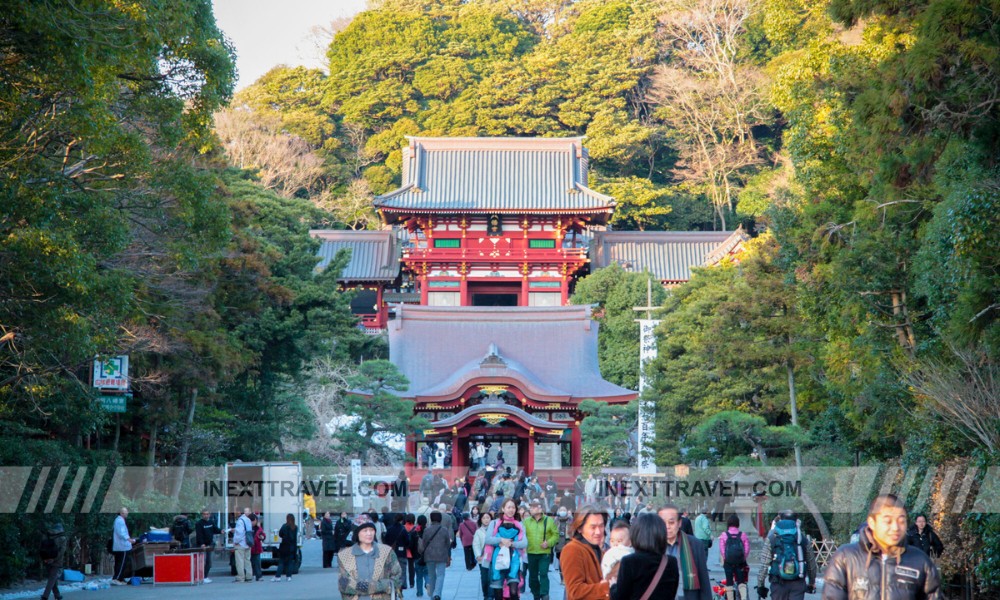
Beyond its role as a venue for festivals, Tsurugaoka Hachimangu is a place of daily worship and activity. It offers cultural insight through its museum, which houses artifacts related to the shrine’s history and the Kamakura period. The shrine also serves as a community hub, where locals participate in traditional practices and ceremonies, contributing to its dynamic and cultural legacy.
In summary, Tsurugaoka Hachimangu is a stunning architectural site and the vibrant heart of Kamakura’s cultural and religious life. Its historical significance, its role in the community, and the beauty of its grounds and festivals make it one of the best places in Kamakura. It offers a deep and enriching experience of Japan’s Shinto traditions and cultural vibrancy.
Number 4: Kamakura Museum of Literature.
Coming in at number 4, the Kamakura Museum of Literature is a cultural gem nestled in a charming historic villa. Once a royal retreat, it became a sanctuary of literary history and artistic expression. Located amidst the scenic beauty of Kamakura, this museum provides a deep dive into Japan’s rich literary traditions, mainly focusing on the works and lives of writers associated with the Kamakura region.
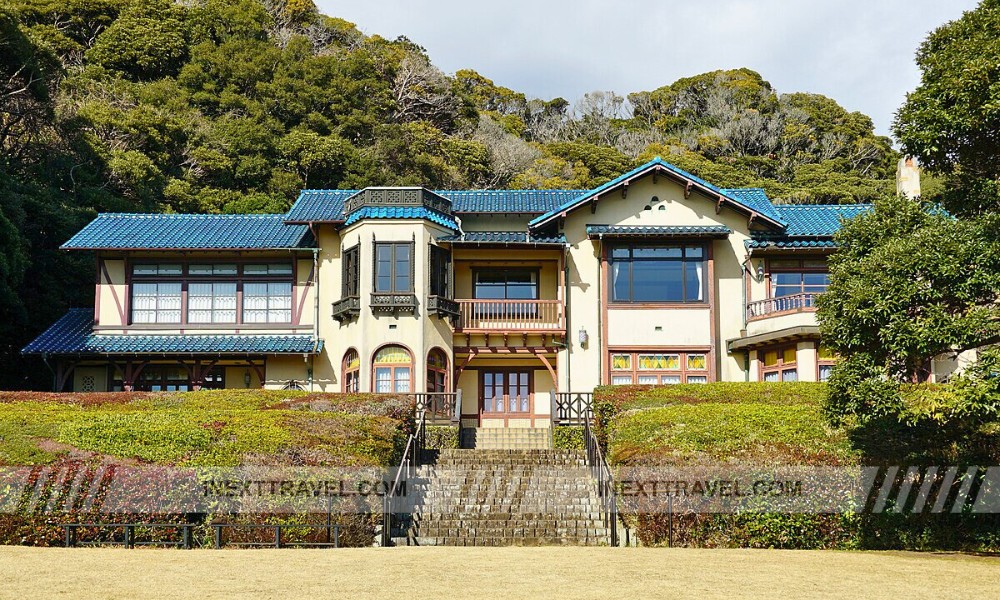
The museum itself is housed in an elegant building that exemplifies early Showa-era architecture, making it a visual treat in its own right. Originally constructed as a summer villa for the Imperial family in the 1930s, the structure features a harmonious blend of Western and Japanese architectural elements. Its spacious, airy rooms and high ceilings provide a perfect backdrop for the exhibits and events.
The Kamakura Museum of Literature’s collection includes many manuscripts, letters, books, and personal items belonging to prominent Japanese authors. It offers visitors a unique opportunity to explore these literary figures’ personal histories and creative environments through well-curated displays that bring their stories and works to life. Special exhibitions often focus on specific themes or authors, providing fresh insights and drawing connections between Kamakura’s historical context and its influence on Japanese literature.
Surrounding the museum are the beautifully maintained gardens, which are as much a draw as the literary collections inside. These gardens, designed with the refined aesthetic of Japanese landscaping, offer a peaceful retreat where visitors can stroll and reflect. Seasonal flowers, traditional stone lanterns, and meandering paths create an atmosphere of tranquility and beauty, enhancing the contemplative experience of the museum.
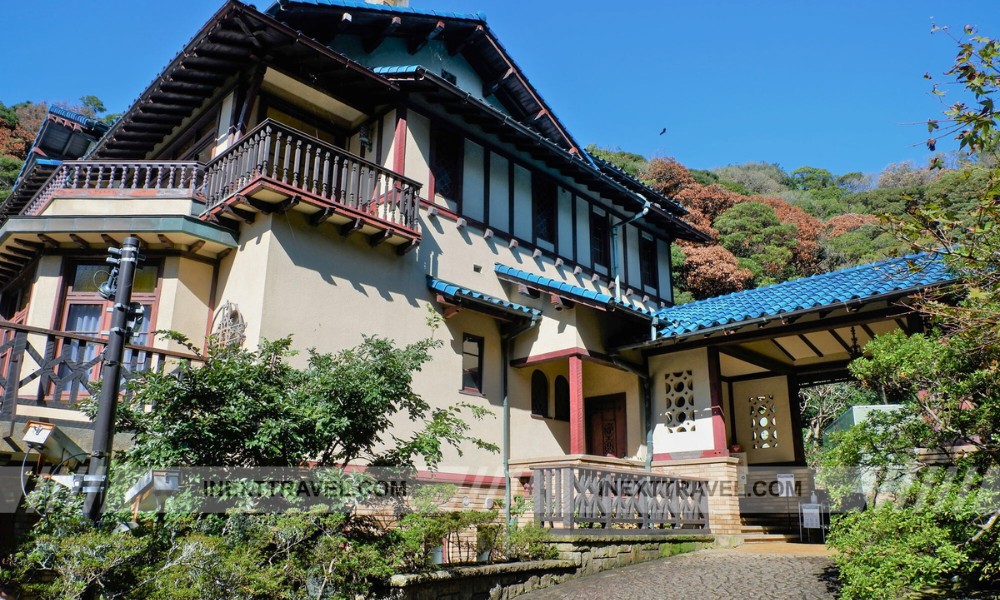
The Kamakura Museum of Literature hosts various cultural events throughout the year, including poetry readings, workshops, and lectures that attract literature enthusiasts and scholars. These events foster a vibrant intellectual community and make literature accessible and engaging to the public.
In summary, the Kamakura Museum of Literature stands out as one of the best places in Kamakura. It offers a blend of literary scholarship, historical architecture, and stunning garden landscapes. It serves not only as a museum but also as a cultural hub that celebrates and perpetuates the literary heritage of Kamakura, making it a must-visit destination for anyone interested in the arts, history, and serene beauty of this storied city.
Number 3 – Engakuji Temple.
Number 3, Engakuji Temple, is one of the leading Zen temples in Eastern Japan. It offers a profound sanctuary for meditation, reflection, and spiritual learning. Located in the historic city of Kamakura, a place with deep Zen traditions, Engakuji is significant for its religious importance, tranquil setting, and architectural elegance, which draw visitors seeking spiritual enrichment and peace.
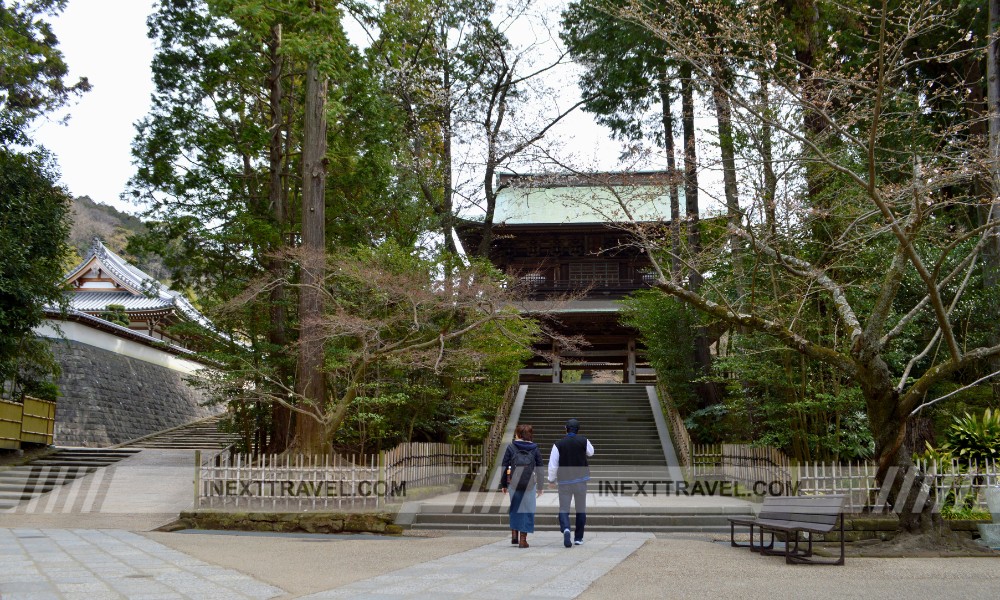
Founded in the late 13th century to commemorate the fallen Japanese soldiers of the Mongol invasions, the Engakuji Temple has become a significant center of Zen Buddhist teaching and practice. The temple complex is spread across a forested hillside. It features multiple buildings, including the main hall, the large bell, monks’ quarters, and a well-preserved ancient library that houses critical Buddhist scriptures.
The architectural layout of Engakuji is a testament to the principles of Zen Buddhism, emphasizing simplicity, harmony with nature, and fostering an environment conducive to meditation. The buildings are constructed using traditional Japanese techniques that perfectly complement the surrounding landscape, featuring wooden structures, gracefully curved roofs, and open, airy spaces that invite contemplation.
One of the temple’s most notable features is its zazen (meditation) sessions, which are open to the public. These sessions provide a unique opportunity for visitors to engage directly with Zen practices under the guidance of experienced monks, offering a deeper understanding and personal experience of Zen mindfulness techniques.
The temple grounds are equally conducive to reflection, with carefully curated gardens typical of Zen aesthetics. These include rock gardens that play with space and scale, creating abstract landscapes to inspire inner reflection and calm. Paths winding through the temple’s extensive grounds lead to secluded spots where one can sit and meditate, surrounded by the natural beauty of towering trees and the quiet sounds of nature.
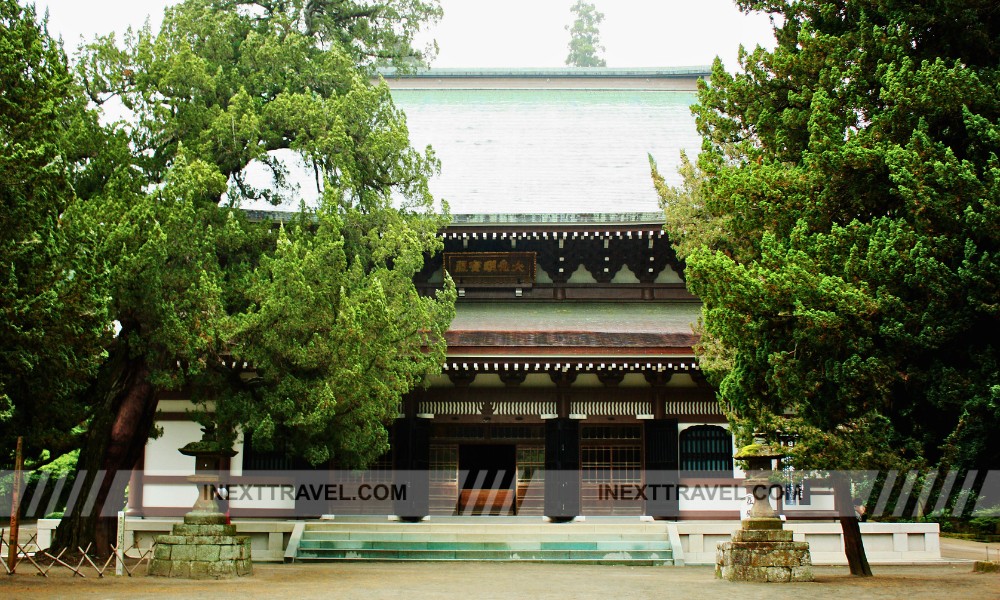
Engakuji annually hosts cultural and religious events highlighting Zen Buddhism’s rich traditions and artistic expressions. These include tea ceremonies, spiritual lectures, and cultural performances in the temple’s lecture hall, further enriching the visitor experience.
In summary, Engakuji Temple is more than just a site of historical and architectural significance; it is a living center of Zen practice that offers a tranquil refuge from the bustle of everyday life. Its beautiful setting, profound spiritual offerings, and serene atmosphere make it one of the best attractive places in Kamakura for those seeking to delve into Zen Buddhism’s depths or find peace in a breathtaking environment.
Number 2 – The Great Buddha of Kamakura.
Our runner-up, the Great Buddha of Kamakura, stands as a monumental icon of the city but also of serene resilience and artistic mastery. This colossal bronze statue of Amida Buddha, located at Kotoku-in Temple, is one of Japan’s most famous and historically significant sculptures, drawing visitors from across the globe who marvel at its size, beauty, and spiritual presence.

Constructed in 1252, the Great Buddha, or Daibutsu, was initially housed inside a large temple hall. However, the temple structures were destroyed after typhoons and tidal waves in the 14th and 15th centuries, leaving the Buddha seated openly under the sky. This exposure has given the statue a unique character, embodying a blend of natural resilience and divine tranquility.
The statue stands approximately 11.4 meters tall and weighs around 121 tons, making it one of Japan’s most giant Buddha statues. It is crafted with exquisite detail, from the curls of its hair to the folds of its robe, reflecting the skilled craftsmanship of the Kamakura period, widely regarded as a golden age of Japanese sculpture. The tranquil expression on the Buddha’s face, with half-closed eyes and a slight smile, invites contemplation and offers a moment of peace to all who visit.
Visitors to the Great Buddha can view the statue from various angles, each offering a different perspective and a new appreciation of its grandeur and artistic detail. For a small fee, they can even enter the statue and see the interior construction, which provides insight into the engineering techniques used during its creation.
The area surrounding the Great Buddha also enhances the visit. The grounds of Kotoku-in are serene and well-maintained, filled with smaller shrines and floral displays that change with the seasons. This setting frames the statue beautifully and complements visitors’ spiritual and historical journey.
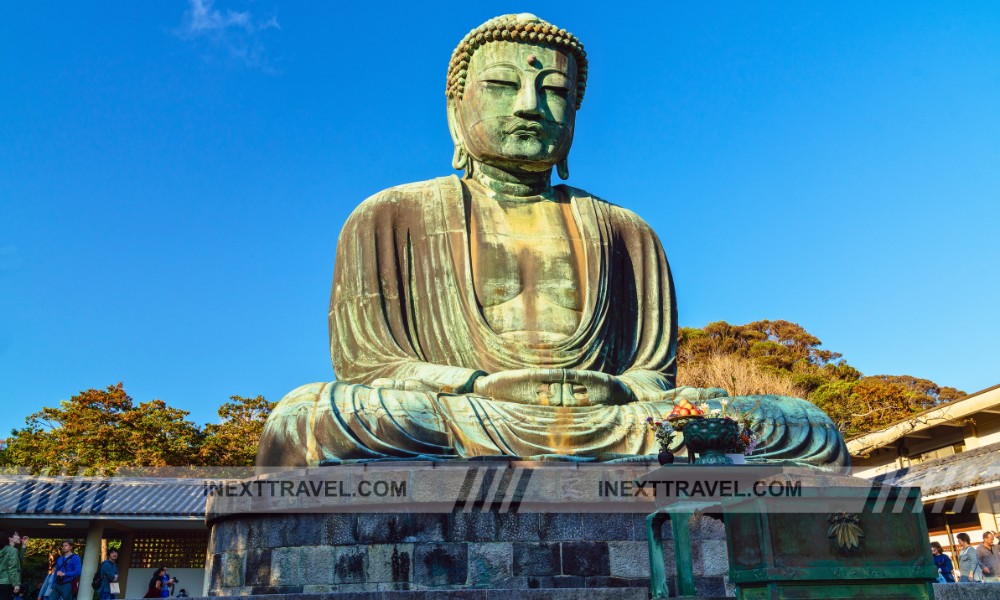
The Great Buddha of Kamakura is more than just a tourist attraction; it is a pilgrimage site for those seeking spiritual insight and a subject of study for art historians and sculptors. Its enduring presence, having witnessed centuries of history while remaining unchanged, offers a profound message of endurance and peace in the face of life’s trials.
In summary, the Great Buddha of Kamakura is a masterpiece of religious art and a beacon of calm in the bustling city. Its historical significance, spiritual gravitas, and artistic beauty make it one of the best beautiful places in Kamakura, genuinely deserving of its iconic status.
Number 1 – Kamakura’s Historical Walking Trails.
At number one, Kamakura’s Historical Walking Trails offer an unrivaled exploration of the city’s rich tapestry of history, spirituality, and natural beauty. These trails form a network of paths that allow visitors to traverse the same routes once walked by samurai, monks, and pilgrims. They weave through ancient forests and link an array of majestic temples and serene shrines.

The trails stretch across varying landscapes—from coastal roads with views of Sagami Bay to secluded paths shrouded by thick greenery, each offering its unique perspective of Kamakura. One of the most celebrated trails is the Daibutsu Hiking Course, which connects the Great Buddha with the Zeniarai Benzaiten Shrine. This path offers spiritual enrichment and immerses hikers in the natural splendor of lush, rolling hills and the vibrant colors of the changing seasons.
Another notable trail is the Gionyama Hiking Course, which is known for its historical significance and scenic beauty. It passes through hidden sites where ancient artifacts have been discovered and provides panoramic views of the city and the ocean. This trail epitomizes the blend of history and nature that makes Kamakura’s walking paths captivating.
The historical trails also lead to lesser-known temples and shrines, each with stories and treasures. These quieter, more intimate locales offer a chance to experience moments of solitude and reflection away from the more frequented tourist spots. Walking these paths feels like stepping back in time, with each turn and each temple visit contributing to a deeper understanding of Kamakura’s storied past.

Additionally, the trails support a diverse ecosystem, home to various species of flora and fauna that change with the seasons, enhancing the walking experience with natural wonders—from springtime sakura blossoms to autumnal red maples.
Kamakura’s Historical Walking Trails provide a physical journey through the city’s landscapes and a journey through time, connecting walkers with the city’s historical and cultural heart. Whether you are a history enthusiast, a spiritual seeker, or a nature lover, these trails offer a comprehensive and enriching experience, making them the most beautiful place in Kamakura for those who wish to discover the city’s essence on foot.
Conclusion
As we conclude our tour of the ten best beautiful places in Kamakura, it’s clear that this historic city offers a unique blend of natural beauty, cultural depth, and spiritual tranquility.
Each location we’ve explored tells a part of Kamakura’s rich story, from the majestic tranquility of the Great Buddha to the lush, enveloping pathways of its historic walking trails.
Kamakura captivates visitors with its scenic landscapes and ancient architecture and invites them to immerse themselves in peaceful reflection and appreciation of its profound heritage.
Whether wandering through the serene bamboo groves of Hokokuji Temple, enjoying the ocean views from Zaimokuza Beach, or experiencing the vibrant festivals at Tsurugaoka Hachimangu, Kamakura offers endless opportunities to connect with history and nature.
These spots exemplify why Kamakura remains a beloved destination, providing awe-inspiring sights and quiet corners for personal retreats.
We hope this journey inspires you to explore Kamakura’s incredible blend of beauty and history, making your memories in each cherished spot.
Kamakura awaits you with its stories, scenery, and serenity, making each visit a profound experience you’ll carry with you long after you leave.